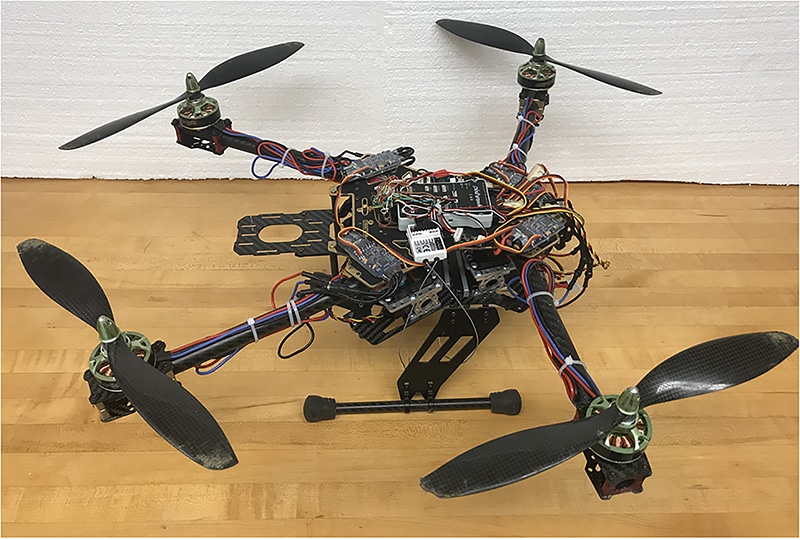Apr 17 2019
Delivery via drone is great—on an ideally, sunny day. But can they function when it is windy? The majority of drones cannot endure wind due to their fixed-arm design.
 A Purdue University researcher has come up with a patented design for drones, or unmanned aerial vehicles that works in windy conditions, is more energy-efficient and can handle a larger payload. (Image credit: Purdue University)
A Purdue University researcher has come up with a patented design for drones, or unmanned aerial vehicles that works in windy conditions, is more energy-efficient and can handle a larger payload. (Image credit: Purdue University)
A scientist from Purdue University has developed a patented design for drones, or unmanned aerial vehicles that functions in windy conditions, is more energy-efficient and can tackle a larger payload.
Our drone design was inspired by the wings and flight patterns of insects. We created a drone design with automatic folding arms that can make in-flight adjustments.
Xiumin Diao, Assistant Professor, School of Engineering Technology, Purdue University.
Diao said the design offers drones with enhanced stability in windy environments because the folding arms can move and alter the device’s center of gravity during flight. He said the drone’s design also makes it more energy efficient as the movable-arm technology enables the use of the complete range of rotor thrust. The technology is described in a paper published in the ASME Journal of Dynamic Systems, Measurement and Control.
The drones on the market now have fixed arms and that greatly reduces their maximum payload capacity when the payload is offset their center of gravity. Our design allows a larger payload because the movable arms can liberate part of rotor thrust to fight the weight on the overall device.
Xiumin Diao, Assistant Professor, School of Engineering Technology, Purdue University.
Diao said the foldable arms also can assist in search-and-rescue operations using drones as they can efficiently navigate the air conditions in calamity-stricken areas and morph by moving the arms to enter into narrow spaces.
In 2018, a record of over $700 million was invested in the drone industry as government, military, and consumer markets witnessed increased demand.
To patent his device, Diao worked with the Purdue Office of Technology Commercialization. They are seeking more scientists and partners to license the technology.
Their research lines up with Purdue's Giant Leaps celebration, celebrating the global progress in sustainability as part of Purdue’s 150th anniversary. Sustainability, including energy-efficient devices, is one of the four subjects of the all year round celebration’s Ideas Festival, designed to promote Purdue as an intellectual hub solving real-world problems.